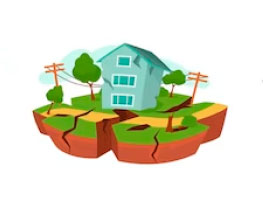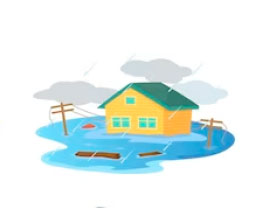Industrial construction has evolved over the years, and one of the most notable innovations is the use of steel frame profiles. Not only do they offer efficiency and speed in construction, but they are an ally against natural disasters. In this article, we will explore the benefits of steel frame in resisting natural disasters, highlighting its advantages and how it can make a difference in industrial construction projects.

1. Earthquake resistance::
Earthquakes are devastating natural events that can wreak havoc on built infrastructure. This is where the steel frame shines:
- Structural flexibility: Steel frame profiles are flexible and can absorb the energy generated by seismic movements, thus reducing the risk of serious damage.
- Weight reduction: Compared to other construction materials, the steel frame is lighter, which decreases the total mass of the structure and, therefore, the load on the ground during an earthquake.
- Earthquake-resistant anchors: Steel frame systems can be equipped with earthquake-resistant anchors that further increase their ability to resist earthquakes.

2. Flood tolerance:
Floods are another common natural disaster that can seriously affect buildings. The steel frame offers notable advantages in this regard:
- Corrosion resistance: Steel profiles are designed to resist corrosion, making them ideal in flood-prone areas.
- Effective Elevation: By elevating the structure on piles or using proper foundations, the risk of damage caused by flooding is reduced.
- Quick recovery: In the event of a flood, steel frame structures allow for faster recovery, since the components are not easily damaged.

3. Fire protection:
Fire resistance is a crucial aspect in industrial construction. Steel frame profiles are highly resistant to fire:
- High melting point: The steel used in the steel frame has a significantly high melting point, which slows the spread of fire.
- Less fuel: Unlike wood, the steel frame does not provide additional fuel in the event of a fire.
- Maintaining structural integrity: Although affected by heat, steel frame tends to maintain its structural integrity longer than other materials.

4. Wind resistance
In regions prone to strong winds and storms, the steel frame proves to be an invaluable ally:
- Aerodynamic design: The steel frame structure can be designed to be more aerodynamic, which reduces wind pressure.
- Strong anchors: Steel frame systems can include specific anchors and connections to resist wind forces.
- Less torsional damage: The rigidity of the steel frame reduces torsion and displacement of the structure during storms, thus minimizing damage.
5. Positive Environmental Impact
In addition to its resistance to natural disasters, the steel frame also has a positive environmental impact:
- Long-term durability: Steel frame structures tend to last longer, reducing the need for reconstruction and therefore the generation of waste.
- Recyclability: Steel is highly recyclable, making it a sustainable material.
- Energy efficiency: Steel frame structures are ideal for installing insulation and energy efficient systems, reducing energy consumption over time.
Conclusions
The use of steel frame profiles in industrial construction projects offers incomparable resistance to various natural disasters. Its structural flexibility, fire resistance, flood tolerance, and ability to withstand earthquakes and high winds make it a wise choice for architects, developers, builders and engineers. Furthermore, its positive environmental impact makes it a sustainable option for the future of industrial construction.
Being aware of these advantages is essential to making informed and safe decisions in the modern construction industry.
